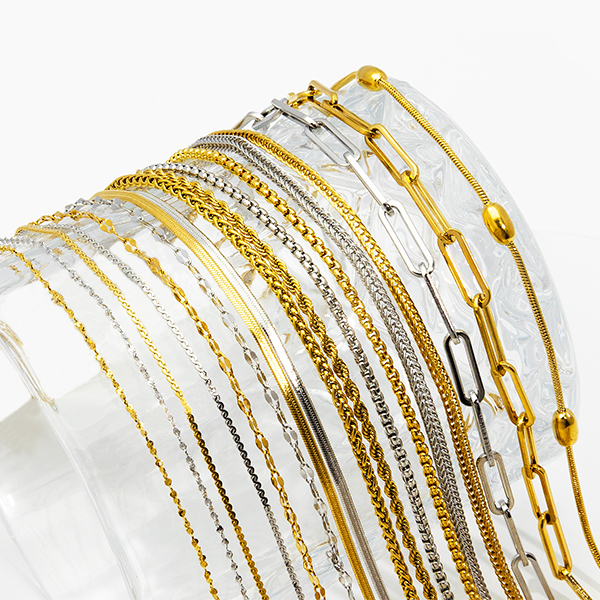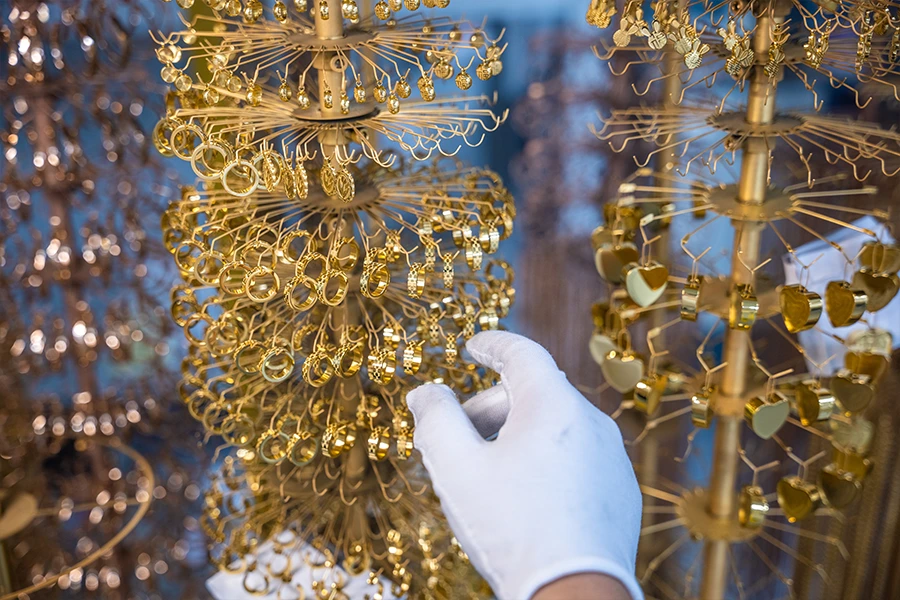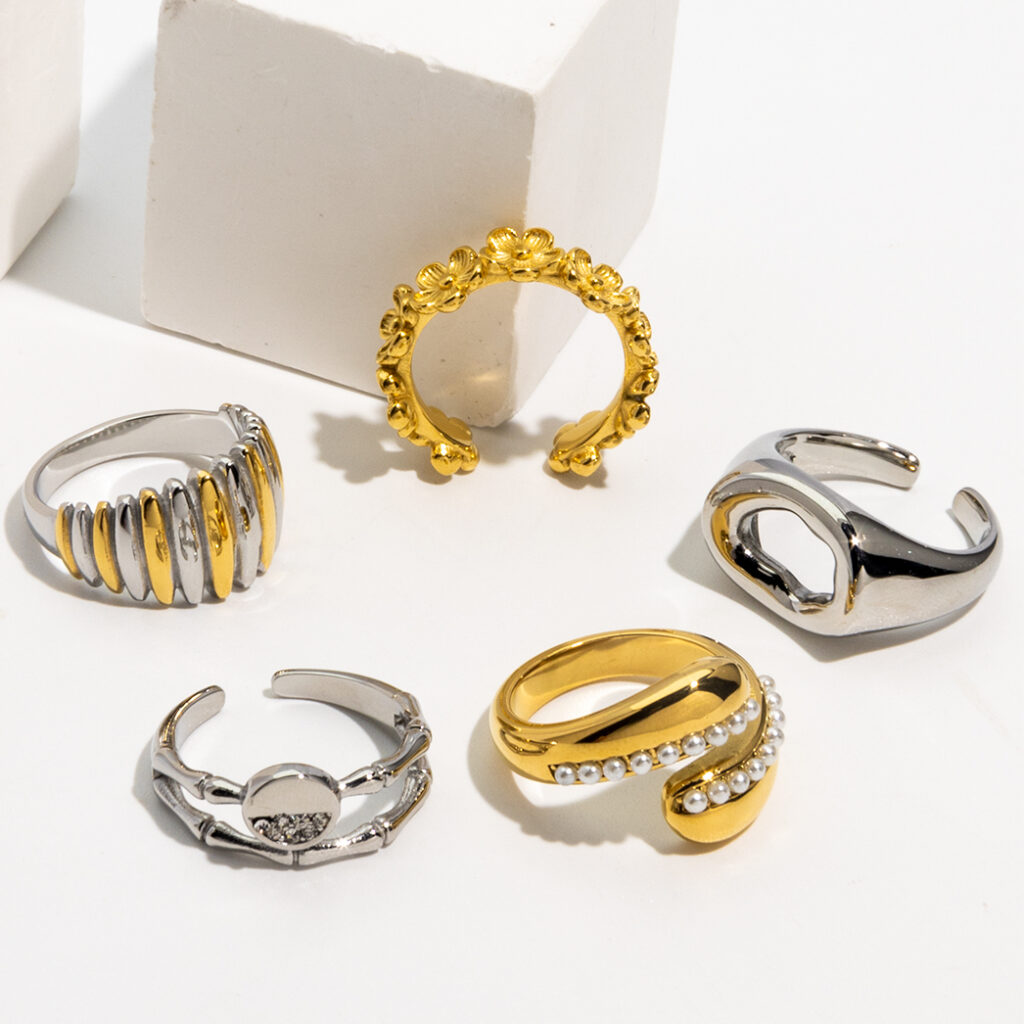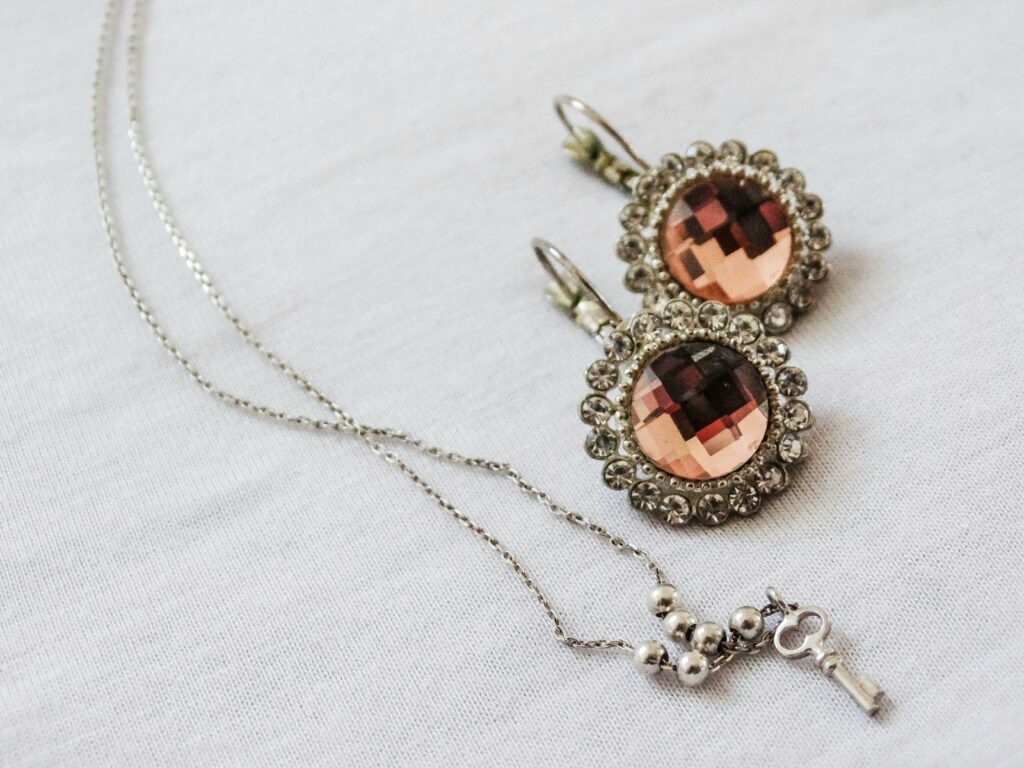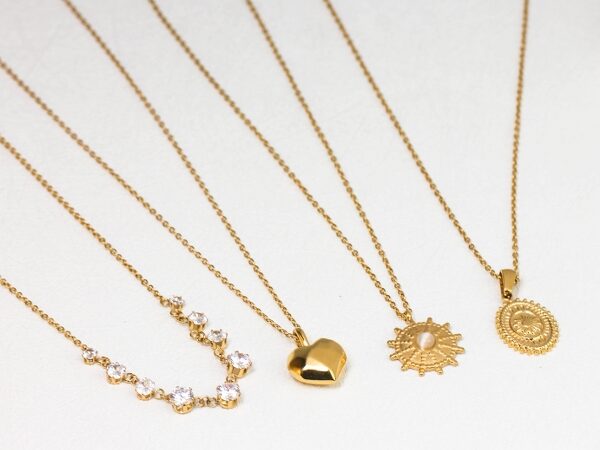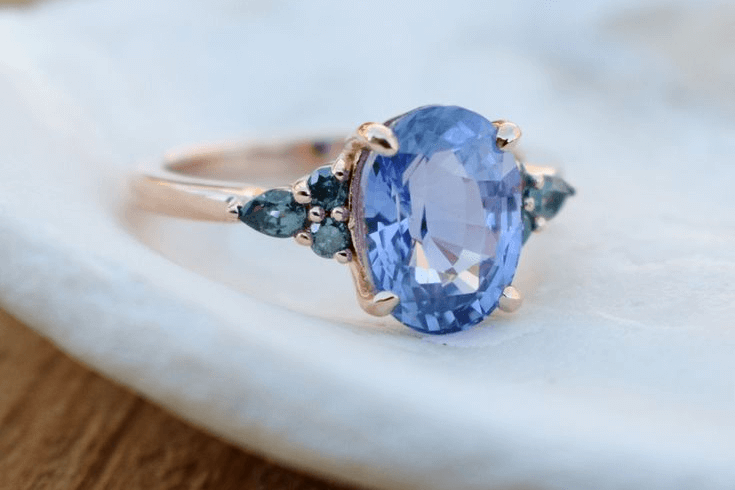Stainless steel jewelry gained popularity in the late 20th century for its durability, affordability, and hypoallergenic properties. Initially used in industrial applications, it transitioned to fashion jewelry due to its resistance to tarnishing and ability to mimic the appearance of more expensive metals like silver and platinum. With its development in the jewelry industry, some ask if stainless steel jewelry tarnishes or rusts, if it is an allergic material, and how to clean it correctly. In this article, we will solve your puzzle by diving into the chemical art of stainless steel, and give 7 easy ways to keep your collection clear and clean.
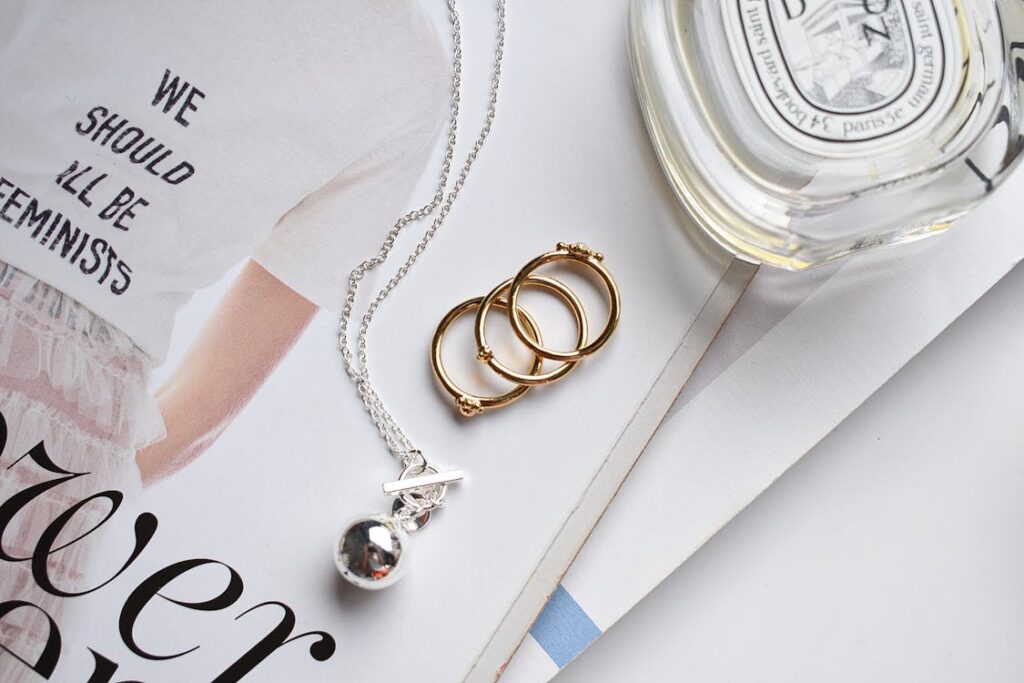
Does Stainless Steel Jewelry Rust or Tarnish?
Stainless steel jewelry is highly rust-resistant due to its alloy composition, primarily including iron, chromium, and nickel. According to ASTM International, acero inoxidable grades like 304 and 316 exhibit excellent corrosion resistance properties, making them ideal for jewelry making.
Típicamente, as the primary base metal, approximately 60-70% iron provides strength, solidity, and structure to the alloy. Its molecular structure allows it to form strong bonds with other elements in the alloy, contributing to the overall stability of the material.
Chromium, constituting 12-20% alloy, forms a protective layer on the surface, known as chromium oxide, which prevents rusting, oxidation, y corrosión. This chromium oxide film provides a high degree of corrosion protection by forming a barrier against external factors. The higher the chromium content in stainless steel, the greater its resistance to rust and corrosion.
Last, 10-14% nickel, another essential component, enhances the alloy’s resistance to corrosion and adds luster and shine to the jewelry. It helps improve the metal’s ductility and toughness, making it more suitable for intricate jewelry designs while maintaining its durability and rust resistance.
Can Stainless Steel Get Wet?
According to research published in the Journal of Materials Science, stainless steel’s corrosion resistance makes it suitable for various applications, including outdoor and marine environments where exposure to water is common. Stainless steel jewelry is no exception.
It is highly water-resistant and can withstand exposure to moisture without corroding or rusting because the chromium oxide on the surface of the metal prevents water molecules from reaching the underlying metal. This protective barrier shields the jewelry from water and helps maintain its luster and integrity over time. Sin embargo, prolonged exposure to chlorinated water in pools or harsh chemicals in hot tubs may affect the appearance of the stainless steel pieces over time. Por lo tanto, removing them before swimming or engaging in prolonged water exposure.
Does Stainless Steel Turn Skin Green?
One common concern among jewelry wearers is whether stainless steel can leave a green mark on the skin. Scientific research findings have highlighted that the green marks left on the skin are not due to allergies but rather a surface reaction with the metal alloy. Known for its hipoalergénico properties, stainless steel jewelry is safe for individuals with sensitive skin.
The appearance of a greenish hue on the skin when wearing stainless steel jewelry is often attributed to a chemical reaction between the metal alloy and the skin’s natural oils or acids. This reaction can be influenced by factors such as humidity, sweat, or pH levels of the skin. While this discoloration may seem alarming, it is typically harmless and temporary.
How Long Does Stainless Steel Jewelry Last?
The lifespan of stainless steel jewelry can vary depending on several factors such as the quality of the steel, how well it is maintained, frequency of wear, exposure to harsh chemicals or environments, and individual usage habits. Here are some estimated durations under various conditions (These are rough estimates and actual longevity may vary based on individual circumstances):
- Exposure to Harsh Environments: Exposure to harsh environments or chemicals may shorten the lifespan. En esos casos, stainless steel jewelry might last around 912 a 1825 days (2.5 a 5 años).
- Regular Wear and Proper Care: With regular wear and proper maintenance, stainless steel jewelry can last approximately 1825 a 3650 days (5 a 10 años).
- Occasional Wear and Maintenance: If worn occasionally and well-maintained, stainless steel jewelry can last around 5475 a 7300 days (15 a 20 años).
- High-Quality Stainless Steel: High-quality stainless steel jewelry can last longer than lower-quality counterparts. It may endure approximately 3650 a 7300 days (10 a 20 años) with proper care.
How to Make Stainless Steel Jewelry Shine?
If you want to know how to make a stainless steel necklace, ring, or bracelet shine, you can follow the stainless steel jewelry manufacturer‘s instructions to keep your collection shiny. Here are five alternative methods to make stainless steel jewelry shine:
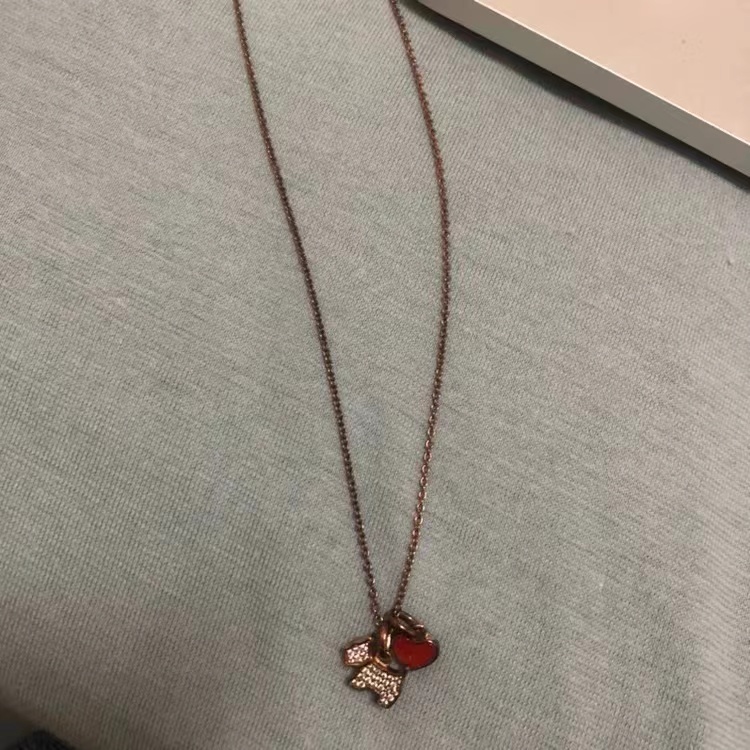
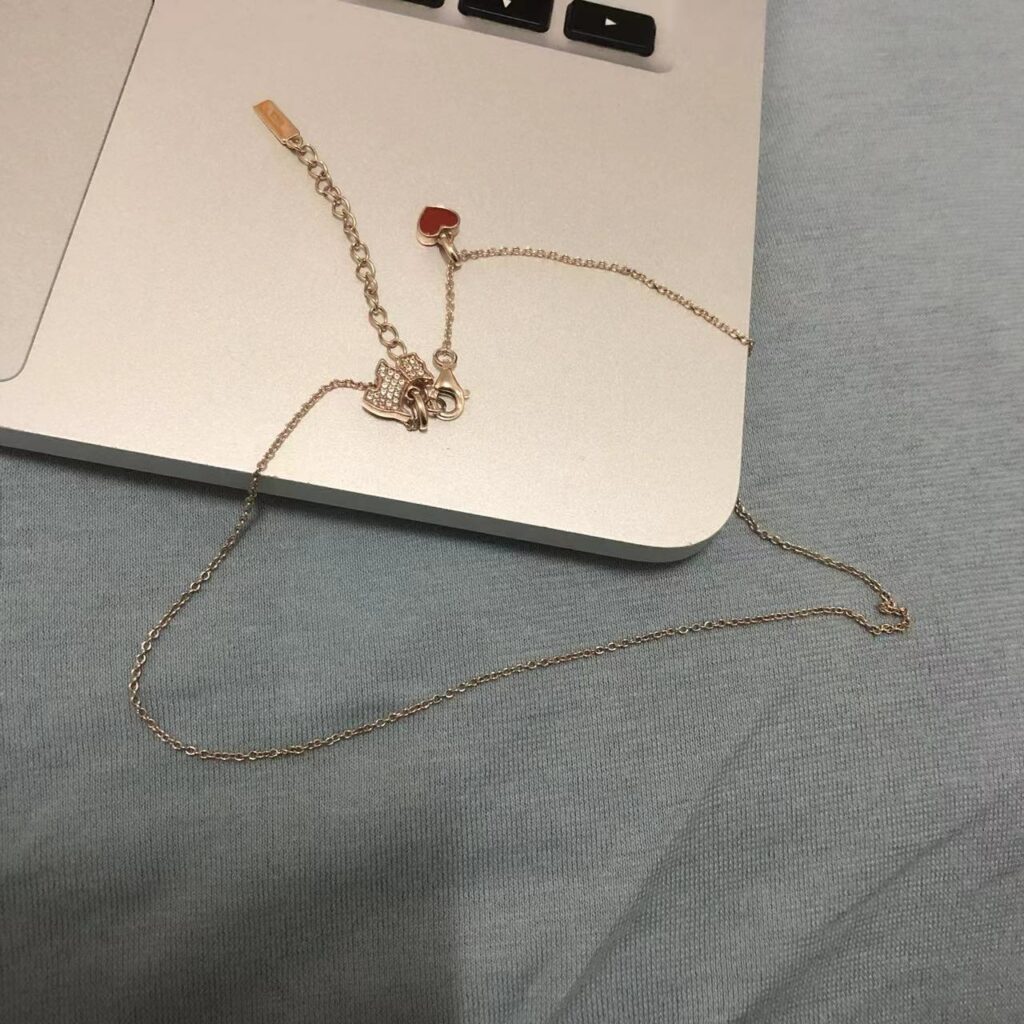
Saltwater
Place the stainless steel jewelry into the saltwater solution, asegurándose de que esté completamente sumergido. Let it soak for 10 a 15 minutos. The hot water and salt solution will help loosen dirt, mugre, and tarnish from the surface of the jewelry.
Vinegar Solution
Create a solution of equal parts white vinegar and water. Soak the stainless steel jewelry in the solution for a few hours, then rinse it thoroughly with water and dry it with a soft cloth. The mild acidity of vinegar can help remove stains and restore shine.
Baking Soda Paste
Make a paste by mixing baking soda with water until it forms a thick consistency. Apply the paste to the jewelry using a soft cloth or toothbrush, then gently scrub the surface. Rinse the jewelry with water and dry it thoroughly to reveal a shiny finish.
Lemon Juice
Squeeze fresh lemon juice onto a soft cloth or directly onto the stainless steel jewelry. Rub the lemon juice onto the surface, focusing on areas with tarnish or dullness. Rinse the jewelry with water and dry it with a soft cloth to remove any lemon residue and reveal a brighter shine.
Toothpaste
Apply a small amount of non-gel toothpaste to a soft cloth or toothbrush. Gently rub the toothpaste onto the stainless steel jewelry in circular motions, focusing on areas that need extra shine. Rinse the jewelry with water and dry it thoroughly to achieve a polished finish.
Olive Oil
Dab a small amount of olive oil onto a soft cloth and gently rub it onto the surface of the stainless steel jewelry. The oil will help remove dirt and grime while also adding shine to the metal. After applying the olive oil, wipe off any excess with a clean cloth to reveal a glossy finish.
Mild Soap and Water
After rinsing with mild soap and warm water, use a soft cloth or sponge to gently scrub the surface, removing dirt, aceites, or residue. Apply a small amount of stainless steel polish to a clean cloth and buff the necklace to a high shine.
Conclusion
Due to the benefits of stainless steel jewelry:
- Hypoallergenic and nonreactive next to the skin.
- Resistant to tarnish and corrosion.
- Suitable for all skin types.
you can opt for stainless steel jewelry that offers versatility and affordability. Its exceptional durability and resistance to tarnish make it a reliable option for daily wear. This longevity factor ensures lasting beauty and reduces the need for frequent maintenance, making it a convenient style staple. Whether you have sensitive skin or seek a low-maintenance option, stainless steel jewelry caters to various needs while complementing a wide range of outfits effortlessly.


